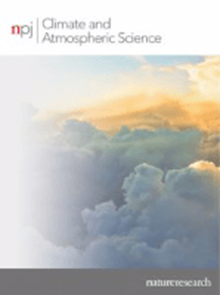基于2021年太平洋西北热浪事件,测试NeuralGCM模拟未来热浪的能力
IF 8.4
1区 地球科学
Q1 METEOROLOGY & ATMOSPHERIC SCIENCES
引用次数: 0
摘要
基于人工智能的天气和气候模型正在成为精确和计算效率高的工具。除了天气预报,它们还有望加速故事情节分析。我们评估了NeuralGCM对能量百亿亿次地球系统模型(E3SM)模拟极端热浪的能力,E3SM是一种基于物理的气候模型。NeuralGCM精确地复制目标事件,并生成稳定和现实的本世纪中叶预测。然而,由于缺乏陆地反馈,与基于物理的模式参考相比,NeuralGCM低估了预估的变暖幅度。本文章由计算机程序翻译,如有差异,请以英文原文为准。

Testing NeuralGCM's capability to simulate future heatwaves based on the 2021 Pacific Northwest heatwave event
AI-based weather and climate models are emerging as accurate and computationally efficient tools. Beyond weather forecasting, they also show promise to accelerate storyline analyses. We evaluate NeuralGCM’s ability to simulate an extreme heatwave against the Energy Exascale Earth System Model (E3SM), a physics-based climate model. NeuralGCM accurately replicates the targeted event, and generates stable and realistic mid-century projections. However, due to the absence of land feedbacks, NeuralGCM underestimates the projected warming amplitude compared to physics-based model references.
求助全文
通过发布文献求助,成功后即可免费获取论文全文。
去求助
来源期刊

npj Climate and Atmospheric Science
Earth and Planetary Sciences-Atmospheric Science
CiteScore
8.80
自引率
3.30%
发文量
87
审稿时长
21 weeks
期刊介绍:
npj Climate and Atmospheric Science is an open-access journal encompassing the relevant physical, chemical, and biological aspects of atmospheric and climate science. The journal places particular emphasis on regional studies that unveil new insights into specific localities, including examinations of local atmospheric composition, such as aerosols.
The range of topics covered by the journal includes climate dynamics, climate variability, weather and climate prediction, climate change, ocean dynamics, weather extremes, air pollution, atmospheric chemistry (including aerosols), the hydrological cycle, and atmosphere–ocean and atmosphere–land interactions. The journal welcomes studies employing a diverse array of methods, including numerical and statistical modeling, the development and application of in situ observational techniques, remote sensing, and the development or evaluation of new reanalyses.
 求助内容:
求助内容: 应助结果提醒方式:
应助结果提醒方式:


